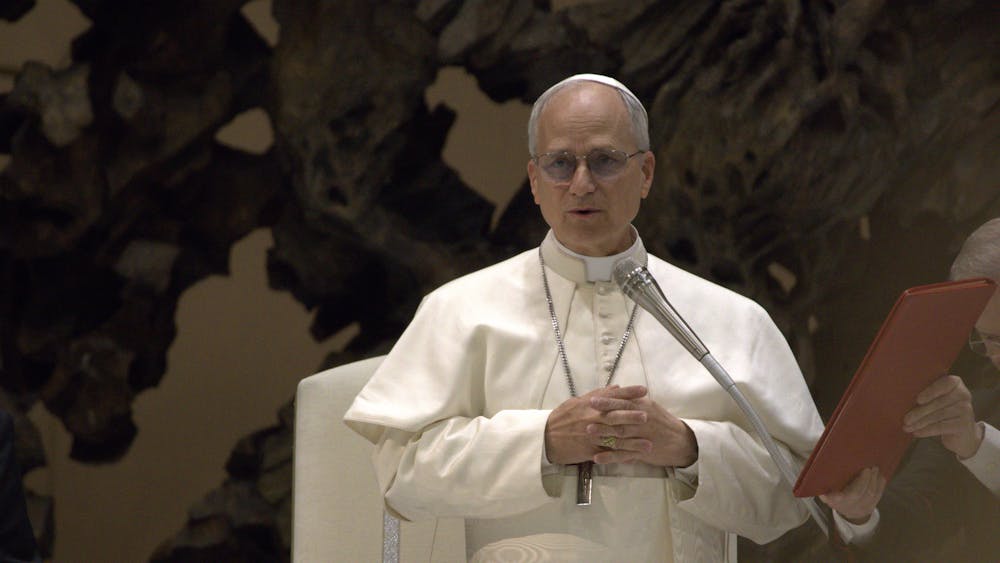Four percent of the president’s leadership council at Notre Dame are people of color, compared to 30 percent of the student body while just 28 percent of the University's Board of Trustees are women, compared to 49 percent of the student body.
These statistics were among several others presented to the student affairs committee of the Board of Trustees last week.
These statistics were presented by members of the 2017-18 student body leadership as part of their spring semester report to the Board on Thursday.
In the fall, the Board chooses the student body leadership’s report topic. Last fall, the Board selected the topic of campus alcohol culture. In the spring, the students get to choose the topic, this year they chose to focus on people of color and people of low socioeconomic status in University and student leadership.
“They’re always really fascinated by what is going on and what we pinpoint as student issues,” student body president emeritus and senior Becca Blais said.
Chief of staff emeritus and junior Prathm Juneja said the students drew upon their own experiences at Notre Dame to pick the topic.
“You have two women in the room, two people of color in the room [and] people of low socioeconomic status in the room,” Juneja said. “We’re just like, these are some of the barriers that we had to face, and we were lucky enough to overcome some of them, but not everyone else gets that opportunity.”
The day before giving the report, student body vice president emeritus and senior Sibonay Shewit said she had high expectations for the report’s reception.
“I think the conversation will be really positive,” Shewit said. “Once it’s in front of you, you acknowledge it and you work towards progress. I can’t imagine a situation where they would deny that this is something that needs to be worked on.”
The report looks at the representation of women and minorities in leadership roles among students — for example, in hall staff — and among University leadership, in groups such as the Board of Trustees and the Board of Fellows.
Juneja said there were no RA‘s of color in his dorm his freshman year, which impacted his ability to feel completely welcome.
“The experiences I had in O’Neill, at least early on, were ones of microaggressions. Even my sophomore year, I had a decently serious hate crime happen against me,” Juneja said. “Those are things that made feel really apart from Notre Dame, and had I had representation in my dorm, I think I would have had mentors.”
The report offers several solutions for lack of representation. Aside from making a greater effort to place minorities in leadership roles, the University could offer monetary gifts to allow students of low socioeconomic status to participate in student government and be RAs, Juneja said.
“Students of low socioeconomic status have no incentive to be RAs because their financial aid often already covers room and board,” Juneja said. “As a result, there aren’t representative leaders in the dorm for students who come in with issues like that.”
The report also asks for student union talentship grants, which will allow students of low socioeconomic status to work in student government without sacrificing the income that an on-campus job would provide.
Blais and Shewit said they found that a lack of female representation in University leadership inhibited their ability to find mentors.
“I did intentionally seek out women mentorship at the University, specifically in administration, and found it very challenging,” Blais said. “It means a lot when you can see a leading woman and identify with her and have someone to look up to.”
Because of stipulations for the Board of Fellows, six of the 12 members of the Board must be Holy Cross priests, according to the website. The University president must also be a Holy Cross priest, restricting the role to men.
“I would love to see a woman in charge of this university one day, more than anything,” Blais said. “But, if that cannot be possible, then I would at least like to see women in the second-hand position … and in more positions on the Board of Fellows.”
Shewit, as a woman and a person of color, said both of these identities have impacted her experience at Notre Dame.
“You see time and time again, when they do these inclusion surveys, there’s almost a correlation between minority students and not feeling as welcome in the community,” Shewit said.
Because of the few poor experiences Juneja had in his dorm community, he does not always know what to advise prospective students of color, he said.
“I’m not sure that Notre Dame is the perfect place for me, but I’m happy with the person it’s making me,” Juneja said. “It’s not an easy task for people of color to come to this University … but by no means is it a bad decision. It’s just a challenging one.”
The results from the Board report might not be visible for several years, Juneja said. However, increased diversity in hiring over the next few years could show the impact of the report.
Shewit said the University must be proactive in taking steps to make sure all students feel welcome.
“Even if it doesn’t really seem like so many tangible things … I can’t stress enough how important it is that students, faculty members, alums, Board members, administrators, continue to talk about representation and the minority experience,” Shewit said.
Read More
Trending









